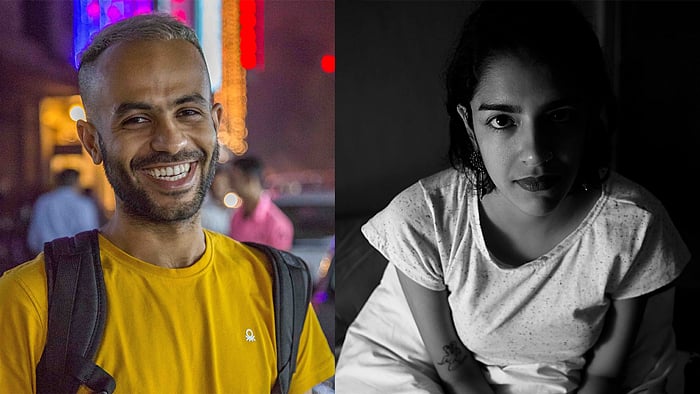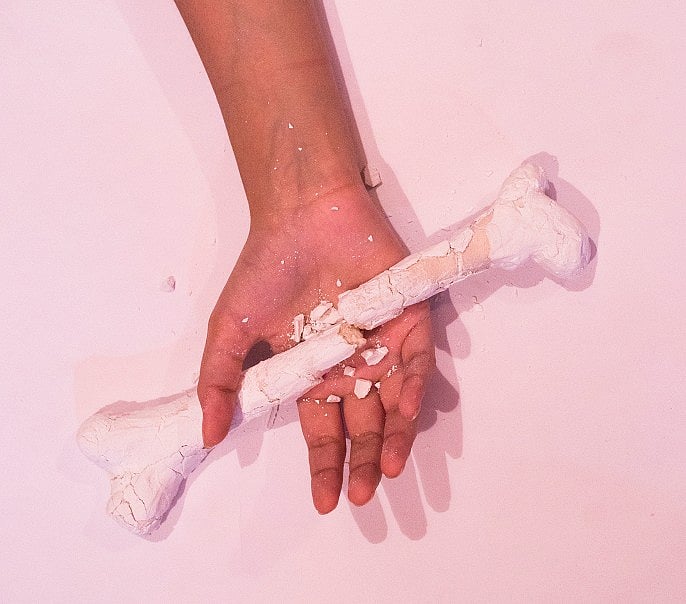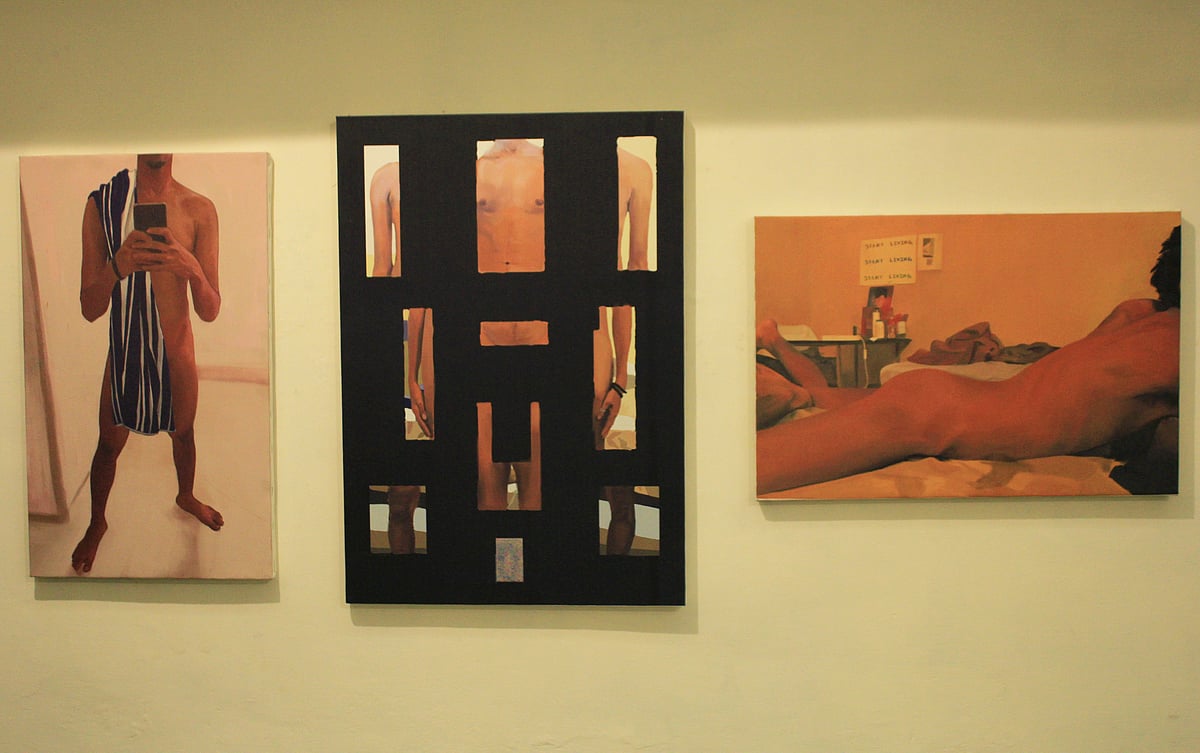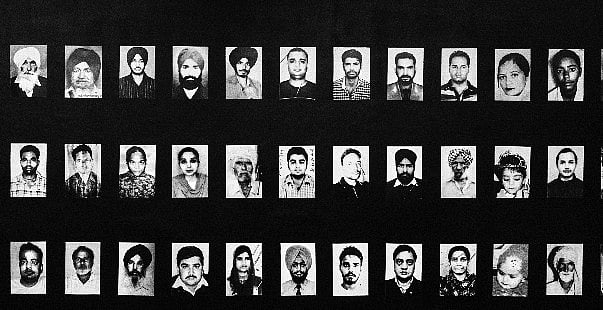Of guerrilla artists and their creative rebellion
Young curators Anant Ahuja and Tarini Sethi have turned an out-of-use furniture factory in Khirki, New Delhi, into an Irregulars Art Fair

“If art is looked at as cultural production,
Who controls its means?
Whose culture does it reflect?
Who draws the line between art and popular culture?”
— A low blow to the high brow
These lines by multi-media artist and musician Shiv Ahuja as a part of his Art hi Art—Yeh kiska culture hai bhai multi-media work at the first edition of the Irregulars Art Fair questions, and also directs, the course of the show. There’s almost nothing subtle about the art in the show. Most of the works aim to drive home a point and the artists are more than willing to take the loud road home.
A tub full of red paint to indicate period blood with a half-submerged female body is what you set your eyes on first. Gucci Girl, Mohna Singh says, “is yet another feminist, anti-consumerism art installation demonstrating the role of women in the market (sales, branding and advertising)”. She questions what is decent and indecent to society. “How is it that when brands like Van Heusen came with taglines, ‘show her it’s a man’s world’, why wasn’t it questioned or taken down, but posts on menstruation and nipples are taken down on a social app like Instagram, which claims to let you be “whoever you want to be”,” Singh asks. “Why is it okay for men to objectify women? This art piece is not about retaliating against such brands, apps or people! It is about bringing general awareness about the basic, civic, bodily needs of a woman,” points out Singh.
Then Lipika Bhargava’s crocheted creation, Passive Dreams, which include a penis, is more than a hint towards our passive acceptance of a received sociality. “The use of crocheted masks, another recurring motif, allows the entry of a real self, unburdened by notions of propriety and decorous behaviour, while the fetishised sculptural objects serve to vocalise repressed desires and actions,”
And that is just the beginning. Purvai Rai’s works uncovers personal narratives, memories, and how identities are formed. Gargi Chandola’s and Yaman Navlakha’s installation titled Milking it addresses the unmitigated and unabated extraction from a cow to fuel the opportunistic industry that produces mostly everyday products, which have captured the imagination of the consumer simply by their physical association to the animal and pseudo-scientific propaganda.
Parth Gupta’s So much water close to home talks about the alarming number of bodies that land up near the Bhakra Main Line Canal sluice gate at Khanauri. All the people in his photographs stare intently and once you realise they have all committed suicide, we are forced to look away. The Bhakra Main Line Canal carries water from the Sutlej River to Punjab, Haryana and Rajasthan. At Khanauri, the canal branches out towards Rajasthan and here, where water gushes out of a sluice gate, is a spot known for being the floating ground for corpses. Despite the alarming number of bodies that find their way here, the government has done little to acknowledge the problem. “Never has there been a proper examination conducted on any of the floating dead, by any of the government agencies. The bodies found in Khanauri are mainly from the districts of Ropar, Fatehgarh Sahib and Patiala in Punjab, but the problems lie in much more depth in other remote areas, upstream and downstream from Khanauri, where I plan to further investigate and document the social, economic and political factors that have led to this constant flow of death,” says Gupta.
Rajshree Saraf’s work, The Purple Heart Project, depicting crumbling bones and cut hair, showcases how she has chosen to understand anorexia. She saw a friend of hers struggling with the disorder and wanted to create a narrative honouring the survivors of the new age epidemic: anorexia, a mental disorder caused by issues of control or of distorted self — body image vented through restrictive eating.
“Anorexia is looked at as a physical disorder and not a mental disorder. The people affected with this disorder might fit your definition of beautiful, pay attention and you’ll see the upsetting secrets and insecurities that they carry with themselves. Seemingly these pictures look all pretty but paying attention to the details will show what’s disturbing; much like the people affected with this disorder. Just because you can’t see the problem at once, doesn’t mean it doesn’t exist. It’s true for all mental illnesses,” points out 22-year-old Saraf.
Mohammed Chiba is his own artwork. Titled Self, Chiba’s work started off as quick studies, but turned into an entire project because of how much he learnt with each painting. “This project is a series of self-portraits using which I’m try to learn how the physical human form works, using different styles, methods and processes. Displayed at the show were four paintings from an ongoing series of self-portraits,” says Chiba. Then there was performance installation by Natasha Sumant, where live models were stationed within a glass cubicle surrounded by kitchen items and religious symbols. Her work critiques stereotypes and questions the norms instilled by patriarchy.
How do define all of these works? How to categorise them? These are some of the questions that led Tarini Sethi and Anant Ahuja to create and curate the Irregulars Art Fair – The anti art fair. “An anti art fair is meant for independent artists to foster a dialogue that transcends prescribed geographies, hierarchies, and markets. We are hoping to create an alternative space for the irregular arts, for the weird and the bizarre. We aim to create a cultural community amongst all genres of art and culture and for inventing new ones. Through this art fair, we seek to present new artists in spaces that were not originally created for an art exhibition and to display their art in ways that are not usually meant for displaying,” elaborates Ahuja.
“Our fair is different from other fairs for a number of reasons. One, we have only independent artists showcasing their work. Two, there are absolutely no booths; all the 54 artists share the space with each other and use the space we have allotted to them to do whatever they deem fit. Basically, we gave them space, a few ideas and then told them they could go completely crazy. We told them they could paint on the walls, on the floor and on the ceiling,” says Sethi.
Sethi has been curating shows for independent artists and Anant Ahuja is the creative director of Bridge Studios. They met at an art residency in Benares organised by Design Fabric. Around the same time the two of them decided to collaborate, Tarini realised that she could use this empty factory. They then decided to open all the floors for art.
This year they had decided that because it was their first, they wanted it open to everyone without a theme. “We had a small jury who decided who we picked. We knew we wanted different kinds of art, not only digital art or paintings, which is the trend at the moment, but we also looked for people who had interesting proposals. We wanted to encourage artists who had thought about their applications for a while and not only people who had sent in their college thesis,” narrates Sethi.
This year’s edition, in interdisciplinary fashion, had paintings, sculptures, mix-media works, performance art, live painting and live music.
Being under 30 has definitely worked in Sethi and Ahuja’s favour. Artists found it easier to discuss their ideas and create something different. “I think because we’re younger and maybe because we haven’t seen or experienced a lot just yet, we are trying the newest and craziest things. Of course they all might fall flat in our face, but we’re trying to go as big as possible and taking some big risks. It has definitely been a boon for us,” says Sethi.
Follow us on: Facebook, Twitter, Google News, Instagram
Join our official telegram channel (@nationalherald) and stay updated with the latest headlines
- Anant Ahuja
- Tarini Sethi
- Irregulars Art Fair
- Shiv Ahuja
- Gucci Girl
- Mohna Singh
- Lipika Bhargava
- The Purple Heart Project
- Rajshree Saraf
- Bhakra Main Line Canal sluice gate
- Mohammed Chiba
- Partha Gupta





